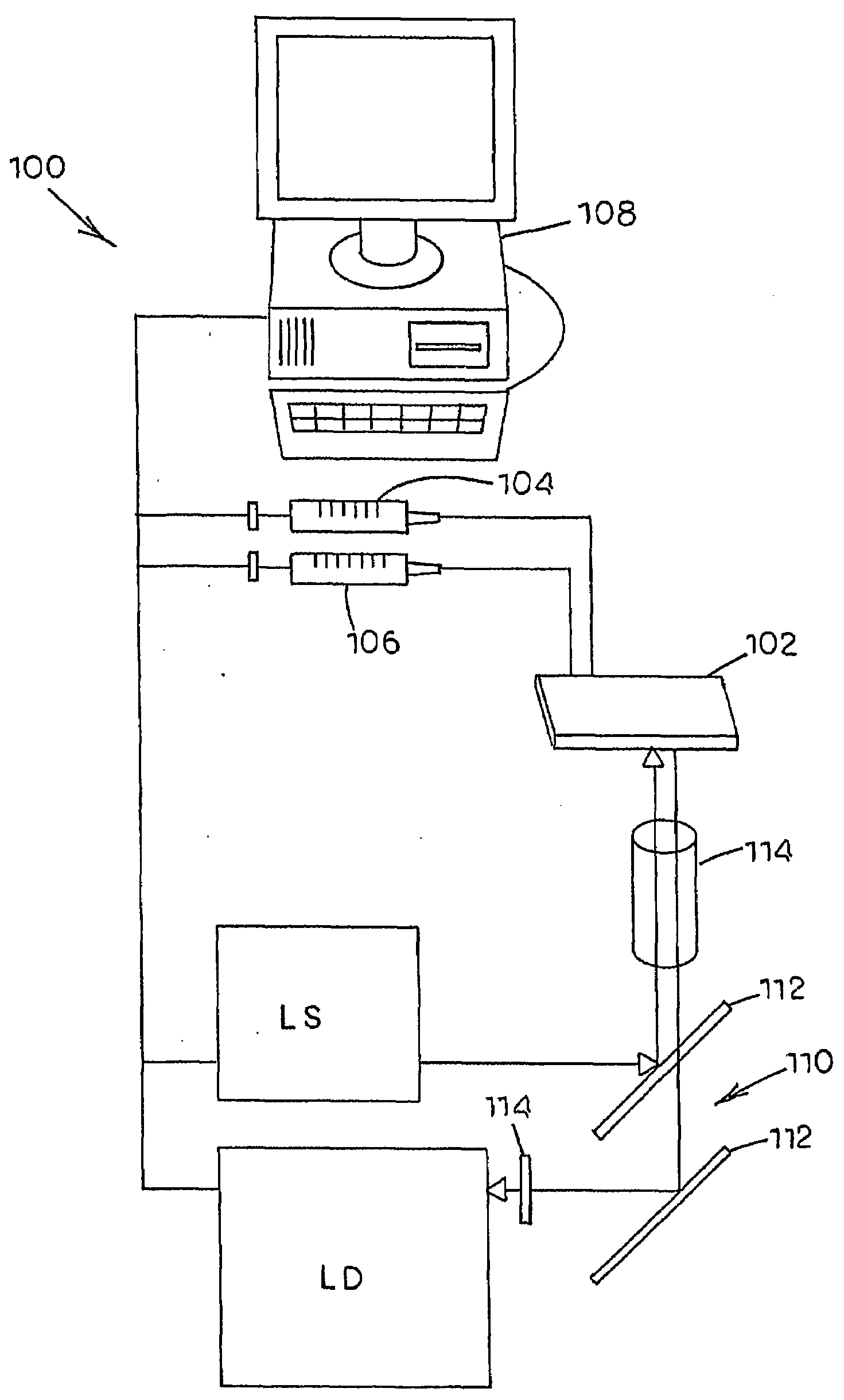Microfluidic systems, devices and methods for reducing background autofluorescence and the effects thereof
a microfluidic system and autofluorescence technology, applied in the field of microfluidic systems, devices, can solve the problems of significantly increasing signal-to-background, reducing cost and improving data quality, and glass substrate materials that are difficult to manufacture into microfluidic chips, so as to reduce autofluorescence, reduce background autofluorescence, and reduce autofluorescence
- Summary
- Abstract
- Description
- Claims
- Application Information
AI Technical Summary
Benefits of technology
Problems solved by technology
Method used
Image
Examples
Embodiment Construction
[0034]Microfluidic chips, systems, devices and related methods are described herein which incorporate improvements for reducing background autofluorescence and the effects thereof. These microfluidic chips, systems, devices and methods are described with regard to the accompanying drawings. It should be appreciated that the drawings do not constitute limitations on the scope of the disclosed microfluidic chips, systems, and methods.
[0035]As used herein, the term “autofluorescence” generally refers to the natural, inherent fluorescent light that is emitted by a substrate when the substrate is irradiated with an excitation light.
[0036]As used herein, the term “fluid” generally means any flowable medium such as liquid, gas, vapor, supercritical fluid, combinations thereof, or the ordinary meaning as understood by those of skill in the art.
[0037]As used herein, the term “vapor” generally means any fluid that can move and expand without restriction except for at a physical boundary such ...
PUM
 Login to View More
Login to View More Abstract
Description
Claims
Application Information
 Login to View More
Login to View More - R&D
- Intellectual Property
- Life Sciences
- Materials
- Tech Scout
- Unparalleled Data Quality
- Higher Quality Content
- 60% Fewer Hallucinations
Browse by: Latest US Patents, China's latest patents, Technical Efficacy Thesaurus, Application Domain, Technology Topic, Popular Technical Reports.
© 2025 PatSnap. All rights reserved.Legal|Privacy policy|Modern Slavery Act Transparency Statement|Sitemap|About US| Contact US: help@patsnap.com



